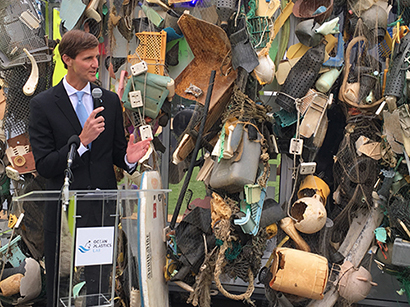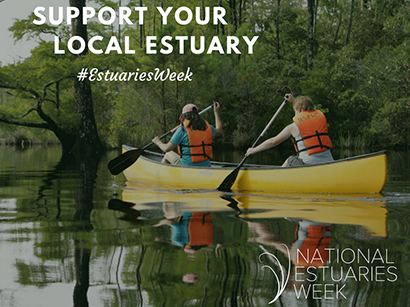|
NOAA is recommending $8.2 million in funding to 15 partners for projects through the Community-based Restoration Program grants. These investments will restore habitat in 10 states and Puerto Rico and leverage a total of $13 million of non-federal funds over the next three years to maximize the impact and lead to lasting results for communities, the economy, and the environment. Learn More >
Habitat conservation requires strong partnerships, and they are incredibly important to us. Our efforts are collaborative and use sound science in support of sustaining fisheries and recovering protected species. We work in partnerships at all levels—with local, state, federal governments, private entities, and non-governmental organizations—toward shared goals and enhanced understanding. Here are just a few of the partnership efforts helping us to achieve our goals. Learn More >
Located in southern Cook Inlet, Alaska's Kachemak Bay Habitat Focus Area supports important recreational, subsistence, and commercial fishing. The region has experienced significant declines in shrimp and crab that have not recovered despite fishery closures. NOAA is working with many partners to study the bay ecosystem, monitor invasive species, and develop risk assessment tools. Watch Video to Learn More >
NOAA announces $1.2 million in funding for habitat restoration in seven Habitat Focus Areas. NOAA’s Habitat Focus Areas, which fall under the NOAA Habitat Blueprint, are targeted places where NOAA is partnering to measurably improve habitat conditions for fisheries, protected resources, and coastal communities. These projects, which build on projects started last year, will continue to restore habitats, support sustainable fisheries and resilient communities, and educate coastal residents. Learn More >
Stand-up paddle boarders explore marsh around Wrightsville Beach, North Carolina. Credit: Hank Carter.
Thank you for submitting your wonderful habitat photos! We received hundreds of compelling photographs to help celebrate NOAA Habitat Month. See these amazing winning photos by habitat type. We will be showcasing selected images as well as other entries throughout our website. Learn More >
Veteran and corps programs are enhancing workforce development and opportunities for higher education in the natural resources field, while restoring coastal habitat to support healthy fisheries, fishing communities, and other NOAA trust resources. The programs are boosting coastal communities by recruiting, training, mentoring, and employing workers to implement habitat restoration projects in support of long-term coastal restoration. There are three unique regional efforts that are a reflection of the wide range of habitats and species we work to protect, conserve and restore. Learn More >
 |
NOAA Fisheries is funding $4.78 million for eight Great Lakes Restoration Initiative projects to restore habitat and improve resilience in degraded Great Lakes ecosystems. This funding will provide multiple benefits to the environment and communities by supporting valuable fisheries and important coastal resources, improving the quality of our water by restoring coastal wetland function, providing recreational opportunities for public use, and increasing the resilience of our coastal and Great Lake communities to erosion and flooding. Learn More >
 |
We wanted to share an opportunity to engage in public listening sessions related to NOAA's role in the new Department of Commerce Strategic Plan, Helping the American Economy Grow. During Admiral Gallaudet’s recent testimony before Congress on the Blue Economy, he announced that he will be hosting eight public listening sessions from August 30 - November 9 related to the NOAA aspects of this plan. Focus topics will be weather forecasting, as well as Blue Economy issues including job creation, and advancing commercial and recreational fisheries, technology development, and tourism. Learn More >
 |
Now celebrating its 30th anniversary, National Estuaries Week is a nationwide celebration of our bays and estuaries and the many benefits they provide to communities. This year, National Estuaries Week will be held September 15-22. We encourage everyone to participate – share your projects on social media, organize a community event, and talk with your local representatives about the importance of healthy, vibrant estuaries. Learn More >
Most people are surprised to learn that deep-sea corals exist at all, let alone that they live in waters of every region of the United States. We now have a suite of four story maps to showcase these unique habitats. New locations and never-before-seen animals are being discovered as NOAA continues to explore the deep ocean using deep-sea submersibles, remotely operated vehicles and emerging technologies that allow scientists to reach new depths. View Story Maps to Learn More >
|